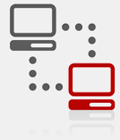Executive Summary
| Service Name: | Mobile Health Clinic (MobClinic01) |
| Country Name: | Zambia (Z4Zambia) |
| Target Customers: | Citizens, Businesses, and other Agencies (possibly) |
Service Mission: Mobile Health Clinic Overview
Mobile Health Clinical Services
Mobile health clinics (MHCs) provide a wide range of medical services that range from helping the homeless to assisting disaster victims. These clinics have been extremely effective around the globe, especially in the developing countries, to combat HIV, reduce infant mortality and improve maternal health. Mobile health clinics combine the following growing areas to help the public:
- Mobile units, equipped with needed medical capabilities, that can move quickly from one location to another
- Telemedicine (the use of medical information exchanged from one site to another electronically) to help the patients. This includes consultative, diagnostic, and treatment services.
- Mobile (portable) devices with the capability to create, store, retrieve, and transmit data in real time between end users to help the patients. The mobile hardware devices coupled with software applications and patient data increases clinicians reach, mobility, and ease of information access, regardless of location.
 A
well integrated Mobile Health Clinic Support Application (shown in the diagram)
should locate the supplies available in the neighborhood, locate potential
patients who need help, support physicians to provide clinical services, access
to patients electronic health record (EHR), and support inventory management,
workflow and administrative activities by using mobile devices over wireless
networks.
A
well integrated Mobile Health Clinic Support Application (shown in the diagram)
should locate the supplies available in the neighborhood, locate potential
patients who need help, support physicians to provide clinical services, access
to patients electronic health record (EHR), and support inventory management,
workflow and administrative activities by using mobile devices over wireless
networks.
Although the services provided by the mobile Health clinics vary widely, the offered services can be categorized as follows:
- Informational only, just to keep the public informed
- Testing (e.g., HIV testing)
- Treatment (e.g., vaccinations)
Naturally, the capabilities needed in the mobile clinic will depend on the type of services being offered.
Common Automation Strategy:
Patient care is being commonly supported by healthcare software from companies such as SAP and IBM. However, an integrated supported system is needed for mobile health clinics.
Service Goals (How this service will be delivered to the customers)
| Service Type: | Transactional |
| Boundaries Crossed: | Federal |
| Use of Web: | No use of Web(Paper-based systems) |
| Use of Mobility: | No use of mobile computing |
Service Assessment Results
- Cost/Benifit Results: Should be Done After Very Careful Analysis of Effort (i.e., try to reduce effort)
- SWOT (Strengths, Weakness, Opportunities, Threats) Results: Worth Pursuing
- Acquisition Strategy Recommended: Outsource
Architecture View

The strategic Planning Document provides information about different aspects of this architectural view. Additional documents generated by the system focus on different aspects of this view.
Following is the list of support documents, in alphabetical order, generated by the system with brief description.
| Support Documents Available | ||||||||||||||||||||||||||||||||||
|
||||||||||||||||||||||||||||||||||







